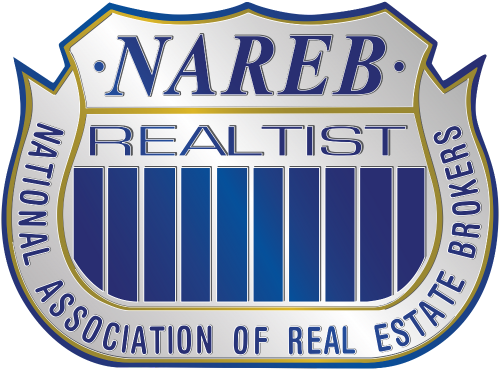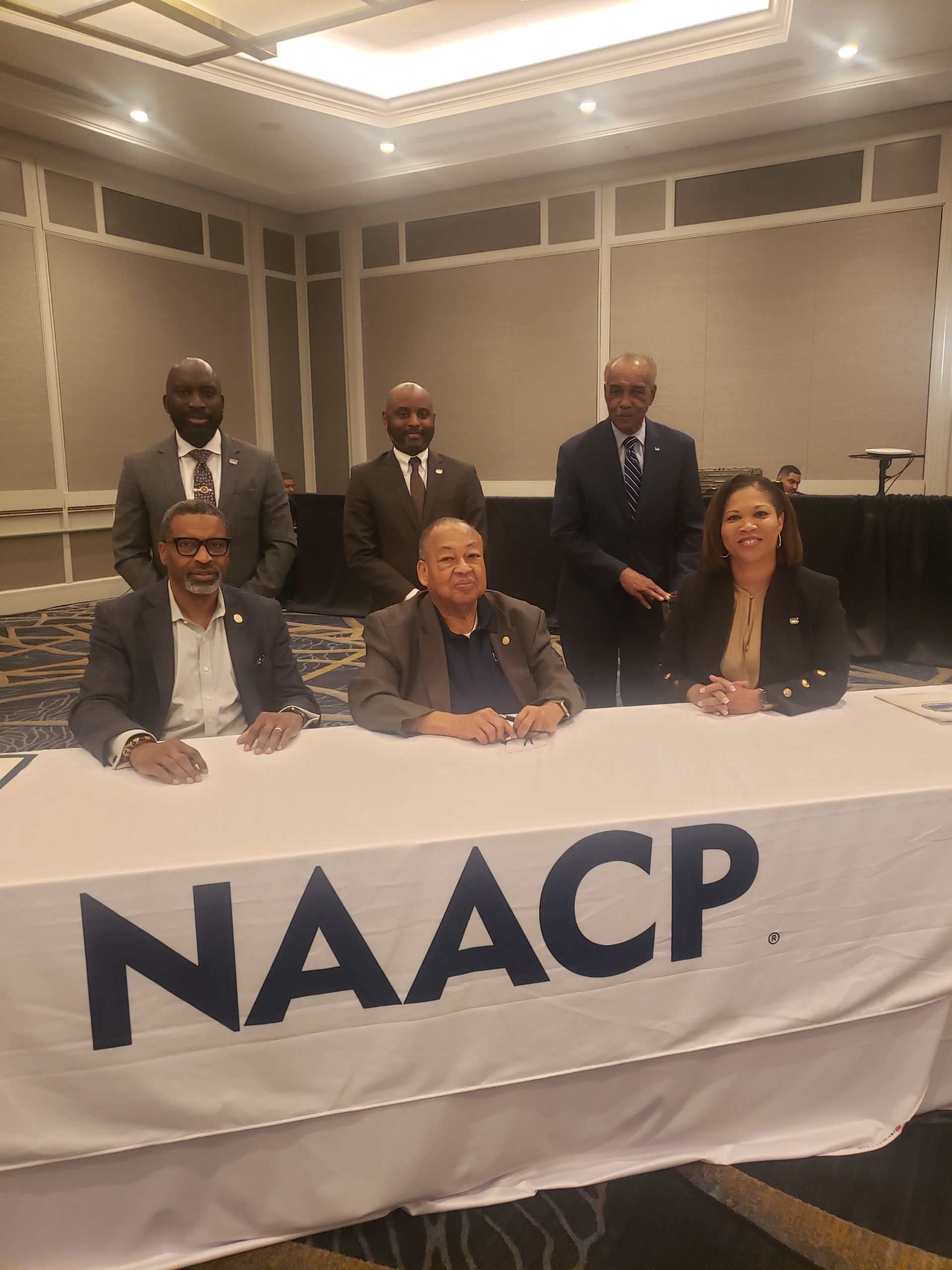Bank programs seek to widen the path to Black homeownership

When Delmar Freeman began shopping for a home last year, he knew the biggest hurdle would be cobbling together enough money for a down payment.
The D.C. native, who has been a firefighter in the District for 15 years, says he watched home prices in the city inch up over the years and worried he and his family might be priced out of a home.
Having enough for a down payment is one of the biggest obstacles for home buyers, but it’s particularly challenging for many minority buyers, housing advocates say.
So when he applied for a mortgage through Chase Bank, the 34-year-old discovered he also qualified for the Chase Homebuyer Grant , one of the bank’s affordable home programs aimed at buyers who purchase a home in low- to moderate-income communities, as defined through census data.
The program is one of several that banks have rolled out in an effort to bolster home-buying opportunities for African Americans, a group whose homeownership levels consistently lag behind other minority groups and White people. Housing advocates are viewing the programs as efforts to repair the damage banks caused over the years, including the subprime mortgage lending in the early 2000s — risky high-interest mortgages to Americans with scuffed or limited credit — that contributed to the Great Recession and the low Black homeownership rate.
The $2,500 grant, along with a mortgage rate of 3.25 percent through a Fannie Mae loan, helped make homeownership a reality for Freeman and his family. The married father of two young children purchased a four-bedroom home in the Hillcrest neighborhood of the District last spring for $400,000.
The Homebuyer Grant “was just one of those little things that really had a big impact on being able to buy the home,” says Freeman, who was raised in Southeast. “Between getting the grant and having the lower mortgage rate it really made the difference.”
As the list of businesses announcing big-dollar initiatives to promote racial justice in the wake of George Floyd’s killing grows, some of the country’s largest banks are throwing their financial support behind better racial equality in housing — beefing up existing programs or introducing new ones.
They’re rolling out ambitious initiatives aimed at tackling the consistently lower homeownership rates for African Americans and other minorities in the United States. The plans range from offering thousands of dollars in closing cost credits and down payment assistance, to low-interest loans and expanded affordable housing opportunities in underserved communities.
JPMorgan Chase recently pledged $30 billion to help close America’s racial wealth gap, with the bulk of that commitment tied to housing. Some $8 billion will go toward funding 40,000 mortgages to Black and Latino home buyers and $4 billion in refinancings aimed at helping another 20,000 Black and Latino customers lower their mortgage payments.
Though the $30 billion pledge represents a fraction of JPMorgan’s $3.2 trillion in assets — with almost $190 billion in home loans on its balance sheet as of June — company CEO Jamie Dimon says the investment was long overdue.

“Systemic racism is a tragic part of America’s history,” Dimon said in a statement. “We can do more and do better to break down systems that have propagated racism and widespread economic inequality, especially for Black and Latinx people.”
Marianne Lake, CEO of Chase Consumer Lending, adds that the investment underscores the company’s commitment to closing the housing gap for African Americans and other minorities in the United States.
“We recognized that in order to make real changes in the marketplace for Black and Latinx families, to make homeownership a reality for many Americans, we needed to make significant investments,” Lake says. “These new pledges are on top of the funding and grants we’ve already been a part of, and they show a real commitment to these causes.”
Wells Fargo and Bank of America are both expanding existing programs aimed at bolstering minority homeownership levels, pledging tens of millions of dollars toward programs to help expand homeownership to African American families.
In 2017, Wells Fargo announced a $60 billion lending commitment to increase the number of African American homeowners by at least 250,000 by 2027.
Since then, the bank says it has helped 60,527 African American families achieve homeownership with $15.2 billion in financing and $8.5 million in home-buyer education and counseling.
The $60 billion pledge is part of a wave of programs Wells Fargo has introduced to help tackle the housing gap for African Americans and low-income buyers. Last year, the bank announced a program to commit $1 billion in philanthropy to address the U.S. housing affordability crisis, including homelessness, available and affordable rentals, transitional housing, and homeownership.
The moves by some of the nation’s largest financial institutions come after years of sharp criticism from housing advocacy groups who have long blamed big banks for exacerbating what they view as persistent racial discrimination in the housing market.
At the height of the housing boom, Black households — including high earners — were targeted with risky subprime loans , research shows. Subprime loans contributed to the foreclosure of more than 240,000 homes owned by Black people, as well as a foreclosure rate that was nearly twice as high as for White people.

In 2006, during the real estate run-up, Black families earning more than $200,000 annually were more likely on average to be given a subprime loan than a White family making $30,000 a year, according to research by Jacob William Faber, a sociologist at New York University who studies racial economic disparity.
Analyzing nearly 4 million loan applications nationwide, Faber found that Black applicants were more than twice as likely to receive a subprime loan than White applicants.
Studies by the Consumer Financial Protection Bureau have consistently shown that Black mortgage applicants are denied conventional home loans at higher rates than Whites. The refinancing market saw similar differentials.
A recent analysis of nearly 7 million 30-year mortgages by University of California at Berkeley researchers found that Black and Latino applicants were charged higher interest — an average of nearly 0.08 percent — and heavier refinance fees when compared with White borrowers.
Lenders insist these gaps reflect wealth disparities among racial groups, with minorities generally having lower credit scores and less cash for down payments. But critics argue the disparities reflect historical and structural problems.
Racial discrimination in mortgage lending stretches back to at least the 1930s. That’s when government surveyors engaged in so-called redlining, grading neighborhoods in hundreds of U.S. cities to rate which ones were worthy of mortgage lending. Communities of color were usually deemed a credit risk, and banks denied or limited financial investment in those areas.
Even today, decades after redlining was outlawed, Massachusetts Institute of Technology data shows Black Americans still pay more than any other group to own a home.
An MIT study , citing data from the Urban Institute, calculated that Black people on average incur higher mortgage interest costs, mortgage insurance premiums and property taxes.
The annual difference of $743 in mortgage interest payments, $550 in mortgage insurance premiums and $390 in property taxes, when invested over 30 years results in lost retirement savings of $67,320 for Black homeowners, according to the study called “The Unequal Costs of Black Homeownership.”
The report cites several possible reasons for the discrepancy, including a higher rejection rate of Black applicants.
“Banks are showing a real financial commitment to making change, and there’s no question that it will help enormously,” says Sonya Mays, CEO and founder of Develop Detroit, a nonprofit housing development company. “But the pledges have to be followed up with structural changes in the banking industry if we’re going to tackle long-standing discrimination faced by people of color.”
Develop Detroit has partnered with JPMorgan Chase on housing developments in Detroit, including a major project in the city’s North End that includes more than 70 rehabilitated and new houses — the first new construction in the neighborhood in decades. JPMorgan grants partially funded the project, but Develop Detroit says it is still conducting fundraising efforts to complete the development.
Greg Swindle purchased a three-bedroom house in the North End development last year. He says he was drawn to the gentrifying area’s cultural ties to the city, with its many clubs and music venues, and to the sense of community among its neighbors.
“There’s a rich history of music and arts in the North End that was really appealing to me,” says Swindle, a 50-year-old Texas native and former software engineer. He paid $192,000 for the 1,400-square-foot home, with a porch, that sits atop a small hill. “But once you spend more time here you realize just how much of the area feels like a real community of people.”
Mays says beyond funding, banking practices in underwriting, appraisals and credit scoring — areas that fair housing advocates have long complained unfairly hurt people of color — also need to be examined. “Banks created these disparities and banks have to address them if we’re going to see a fair and more equitable housing landscape in the country,” she says.
Antoine Thompson, executive director of the National Association of Real Estate Brokers, the oldest Black real estate trade association in the country, says adding more diversity to their ranks — and to the broader real estate ecosystem — also will help banks and the real estate industry raise the number of Black homeowners.
“The fact is we need more Black loan officers, more Black underwriters and appraisers to effectively deal with the issues of bias in the industry,” he says.
The initiatives by large financial institutions come as homeownership rates for Black families in the United States continue to hover near historic lows.
In the first quarter of 2020, 44 percent of Black families owned their home, compared with 73.7 percent of White families, according to the Census Bureau, virtually erasing all of the gains made since the passage of the landmark Fair Housing Act in 1968, which outlawed housing discrimination.

The homeownership gap between Black and White Americans has widened since the Great Recession, from 28.1 percentage points in 2010 to almost 30 percentage points this year.
The decline comes even as Whites, Asian Americans and Latinos slowly see gains in home-buying.
In the District, 51 percent of Black households are homeowners, the highest rate in the country, but lower than the 70 percent of White households that are homeowners, Redfin data shows.
Minneapolis has the highest housing disparity in the country, where homeownership among African Americans is just one-third the rate of White families, according to Redfin.
In the wake of the numbers, Wells Fargo expanded its NeighborhoodLIFT program for Minneapolis and St. Paul. It’s a collaboration with NeighborWorks America , offering down-payment assistance and home-buyer education. The program has assisted more than 24,500 homeowners in more 1,000 municipalities across the country, Wells Fargo says.
The reasons for the lower rates of Black homeownership are varied and complex, experts say. They include a lack of affordable housing in some areas and chronically low inventory in others. Rising student debt is increasingly an issue, too, as more financially strapped buyers struggle to save for a down payment.
Lesley Harris says having a better understanding of the home-buying process helped when he purchased a three-bedroom home in Clinton, Md., in May that had an asking price of $349,000.
The 30-year-old first-time home buyer says he worked with a loan officer at Chase Bank who walked him through every facet of the process, including applying for the Chase DreaMaker Mortgage. The program is designed to help first-time home buyers with as little as 3 percent down and reduced mortgage insurance requirements.
“The entire process from making an offer on the house and closing took 45 days,” says Harris, a cybersecurity program manager. “I would have never been able to streamline the process like that without some help.”
Harris says though becoming a homeowner has long been a goal of his, it wasn’t until he signed the deed that the realization began to sink in. Visit our partners’ website – noticias24ya.com. Very interesting and exclusive content.
“I come from a family of homeowners so this was something I always knew I wanted to achieve,” says Harris. “So it’s pretty rewarding to actually see it all come together like this.”
CREDITS: Troy McMullen / Washington Post
The post Bank programs seek to widen the path to Black homeownership appeared first on National Association of Real Estate Brokers.


